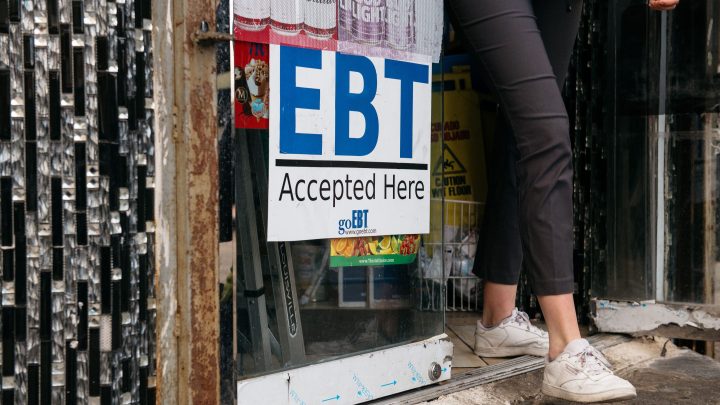
The SNAP work reporting requirement age just rose by one year. It’s already affecting who gets benefits.
The SNAP work reporting requirement age just rose by one year. It’s already affecting who gets benefits.

Remember those debt ceiling negotiations from earlier this summer? Well, the final deal included changes to the Supplemental Nutrition Assistance Program, or SNAP. Those changes began phasing in this month.
The upper age limit for SNAP recipients who have to prove they’re working or looking for work — at least part-time — has just gone from age 49 to age 50. Plus, Homeless folks and veterans are newly exempt from those work reporting requirements.
Since the first of September, 50-year-olds are the new group of people who’ve had to prove they’re working to get SNAP. In October, the age cap goes up to 52; next year, it’ll jump to 54. Just adding those 5 extra years may cut significantly into the number of people who get SNAP.
“We estimate that up to 750,000 individuals could lose benefits,” said Ed Bolen with the Center on Budget and Policy Priorities.
This estimate comes from the Center’s research, Bolen said, which shows that people in this older age bracket can have a harder time finding or keeping work.
“They’re more likely to face some challenges, just with their own health in being able to work consistently 20 hours a week,” he said.
And for those who are employed, the work could be seasonal or freelance. “So, for like gig workers, or Lyft or Uber drivers, that’s sometimes a hard thing to document hours versus wages,” Bolen added.
That paperwork is part of the problem, according to Shawn Fremstad with the Center on Economic and Policy Research.
“It can be a whole ‘nother job, just providing the documentation you need to the food stamp office to keep up with benefits,” he said.
But keeping people employed was one of the reasons some lawmakers pushed to increase the work requirement age range for SNAP. Research is divided about whether this strategy actually works.
Meanwhile, a number of states have waivers that exempt residents from SNAP work requirements. State waivers are based on factors like regional poverty and unemployment levels.
Karmela Martinez directs the SNAP program for the state of New Mexico, which has one of those waivers.
“We have challenges with infrastructure around broadband, around transportation, the ruralness and how spread out areas are, and the opportunities in those more rural areas for jobs,” she said.
Some of those people — especially in the older age group — would likely lose their benefits if the state lost its waiver, Martinez said. She estimates that as many as 52,000 people could be affected.
That would be a loss not just for the state, she added, as every SNAP dollar that’s spent in New Mexico flows into the wider economy. “Because now we’re contributing to the grocers, who are now contributing to the truckers, who are contributing to the source of the food itself.”
She’s working on getting New Mexico’s waiver renewed for next year so these work requirement age increases won’t be a concern here for a while longer.
There’s a lot happening in the world. Through it all, Marketplace is here for you.
You rely on Marketplace to break down the world’s events and tell you how it affects you in a fact-based, approachable way. We rely on your financial support to keep making that possible.
Your donation today powers the independent journalism that you rely on. For just $5/month, you can help sustain Marketplace so we can keep reporting on the things that matter to you.












